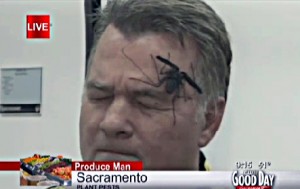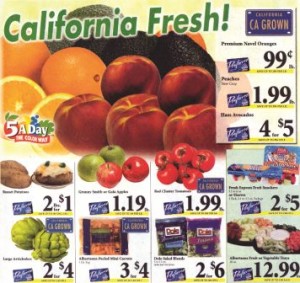California State Board of Food and Agriculture President Craig McNamara has been named as a recipient of the 2012 James Irvine Foundation Leadership Award. More information about the award program may be found here.
To recognize McNamara’s leadership in programs training new farmers, CDFA Secretary Karen Ross authored an opinion piece in the Sacramento Bee:
Viewpoints: How California can nurture next generation of farmers
Special to The Bee
PUBLISHED SUNDAY, FEB. 12, 2012
California has long been known for its flourishing agricultural sector. From small, niche farms to large-scale operations, our state’s farms have been critical in creating jobs and safe, locally grown food for our tables.
But we cannot take for granted this rich history – or our farmers. While California farms provide more than half of America’s fresh food, the average age of Golden State farmers is approaching 60, with nearly 20 percent older than 70. Worrisomely, recent analysis indicates that relatively few heirs are willing to take over their relatives’ farms.
These trends help explain why California, together with other agricultural states, risks a major sell-off of farmland over the next few years. America has been losing more than an acre of farmland with every passing minute according to American Farmland Trust, while agricultural economist David Kohl estimates that 70 percent of U.S. farmland will change hands by 2025.
Considering these projections, it’s clear that we need to double down on our efforts to preserve California’s agricultural sector, supporting all of its productive members.
At stake are rural jobs, a guaranteed homegrown supply of affordable food and much more. Healthy farmland offers wildlife habitat and helps filter impurities from our air and water. The more of this land that we lose to development, the faster our natural environment will decline.
At the same time, maintaining a diverse agricultural system, with varied farm sizes, production methods and crops, can help us weather threats such as plant diseases, global climate change, and fluctuations in world markets and food prices.
These are just some of the reasons why U.S. Department of Agriculture Secretary Tom Vilsack says we need 100,000 new American farmers. Maintaining our supply of land stewards is just as important as preserving our ranks of new police officers and teachers.
One promising model addressing this challenge is the California Farm Academy, a program of the Center for Land-Based Learning and the brainchild of its founder, Craig McNamara. Craig is also president of the California State Board of Food and Agriculture and someone I’ve been fortunate to work with on numerous issues, including efforts to encourage more Californians to go into farming.
Beginning Thursday in Solano County – and funded partly by U.S. Farm Bill dollars through the California Department of Food and Agriculture – the academy will provide hands-on classes and well-tailored training to the mostly young, diverse set of new land stewards we need to step in for retiring farmers.
Take, for example, new academy members such as Vonita Murray, 36, a disabled Gulf War veteran and mother of a 7-year-old daughter. She grows fruit and flowers on four leased acres in Yolo County, where she is also building a running track and yoga studio to attract local visitors.
Or Ophelia Wilson, 45, and Darlean Ellis, 53, sisters who work in county government in Sacramento and plan second careers as farmers. Besides growing crops, they intend to invite urban youths to their land for educational programs, job training, and a taste of rural peace and quiet.
More than 40 percent of the academy’s class of 2012 is under 30 years old. Nearly 60 percent are women, and a quarter are minorities. Most of them plan to farm plots of less than 10 acres.
It is especially encouraging that two members of the new Farm Academy class are military veterans. I’m hopeful that many of the tens of thousands of veterans returning this year from Iraq and Afghanistan can help rebuild and preserve our rural communities, while also building new careers on the land.
The academy will provide its own new recruits with evening and weekend classes, taught by experienced farmers, college faculty, lenders and government conservation officials. Graduates will be able to lease up to half an acre of land at affordable rates, as farm “incubators,” while receiving continuing education and mentoring. When the graduates are ready, the academy will also help qualified students find land of their own.
Americans today have better diets and cleaner air than by far most of the rest of the world. But to preserve that standard of living, we need to maintain our diverse and vibrant array of farms. Among other things, that means planting the seeds today for more Farm Academies throughout America.
© Copyright The Sacramento Bee. All rights reserved.
 “Every penny counts” may be an old quote, but it rings just as true today. The average price of gasoline has shot up to over $4.00 per gallon again. Plenty of people will do the math and maybe drive a little farther to get a good deal at the gas pump. But what if the dispenser isn’t accurate or the premium gas you pumped is only regular (87) octane? That could turn a good deal into a bad purchase. How do you know you’re getting what you pay for?
“Every penny counts” may be an old quote, but it rings just as true today. The average price of gasoline has shot up to over $4.00 per gallon again. Plenty of people will do the math and maybe drive a little farther to get a good deal at the gas pump. But what if the dispenser isn’t accurate or the premium gas you pumped is only regular (87) octane? That could turn a good deal into a bad purchase. How do you know you’re getting what you pay for?





